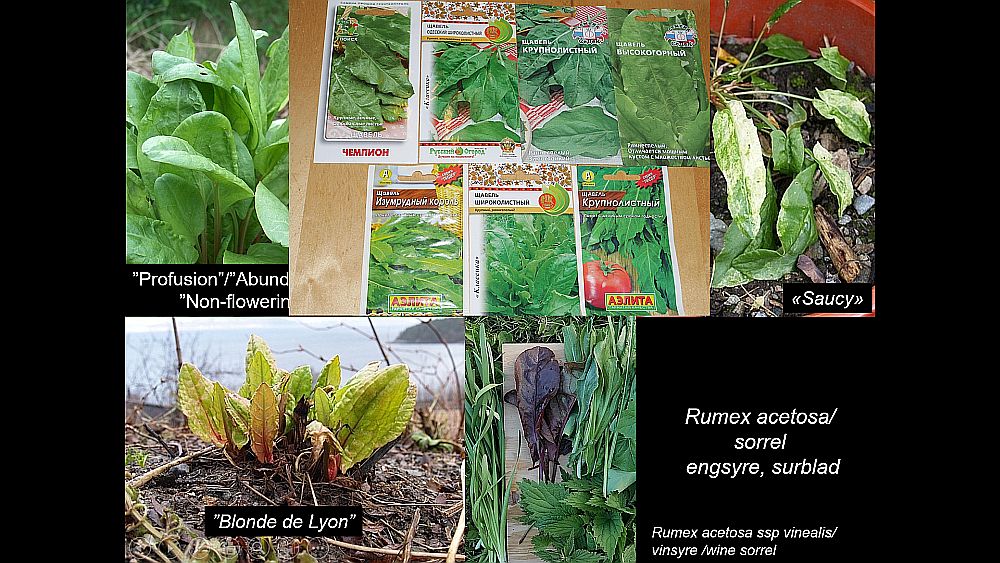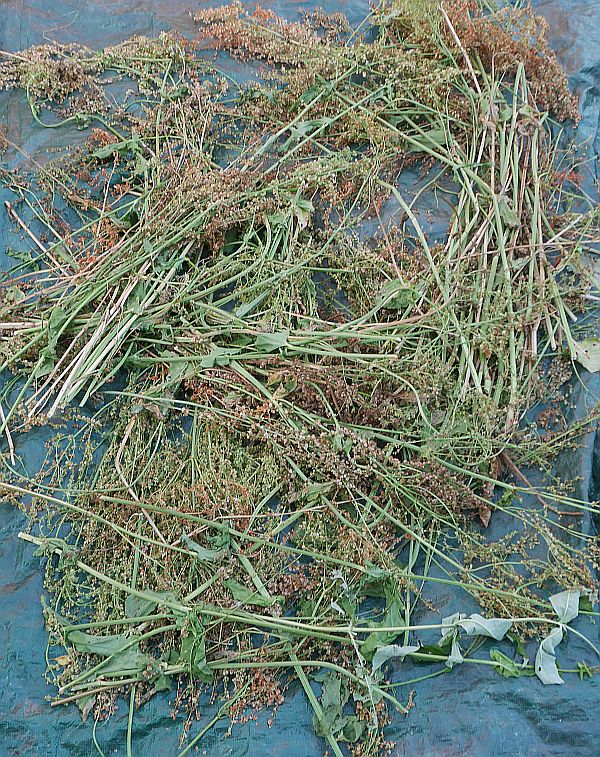Fieldfares (gråtrost) don’t breed in the garden but nearby. After the breeding season, a few forage for the first berries in the garden. Saskatoons / søtmispel (Amelanchier spp.) are the first and in order that I get some too (to dry) I net at least one of the trees:

Here’s a fieldfare alarming…probably a cat lurking in the undergrowth!
Sorrel (Rumex acetosa) is found throughout Europe, even in alpine habitats up to 2,100m in the Alps and 1,900m in Norway. It ranges eastwards as far as Japan and is also found in the Himalayas and mountains of China. It has also naturalised in North America,
New Zealand and Australia. Throughout its range, its a prized wild edible and in France and Russia it is also cultivated for the markets and a number of varieties have been developed. There are also a number of varieties that never flower, giving us fresh leaves throughout the season. This species is fully covered in my book Around the World in 80 plants. A few years ago, I bought 7 varieties of sorrel from a vegetable catalogue in Estonia and planted an area of the garden to these. Last year, I removed all the flowers except one variety and offered seed through KVANN (Norwegian Seed Savers). This year, I let them all flower and will offer a mix of all varieties, now drying in the garden.
If you know Russian, please tell me what the names mean (see the picture from a powerpoint presentation)…at least two are the same!
Last summer I discovered a climber in a hedge in the garden. It turned out to probably be Smilax lasioneura, the Blue Ridge carrionflower, a species closely related to Smilax herbacea, which has edible shoots used like asparagus. I have no record or recollection of planting it here, but I have a record of being offered 3 seeds of Smilax herbacea by Samuel Thayer 10 years ago, so I can only assume it was one of these that germinated.
Yesterday, I was scything an area of the garden and, forgetting the Smilax, I managed to cut right through the stem at the base and it was just coming into flower too, although, being dioecious, there wouldn’t have been any berries. Hopefully, this won’t kill it….and I’ve taken the opportunity to try to propagate it from cuttings!

Perennial vegetables, Edimentals (plants that are edible and ornamental) and other goings on in The Edible Garden





